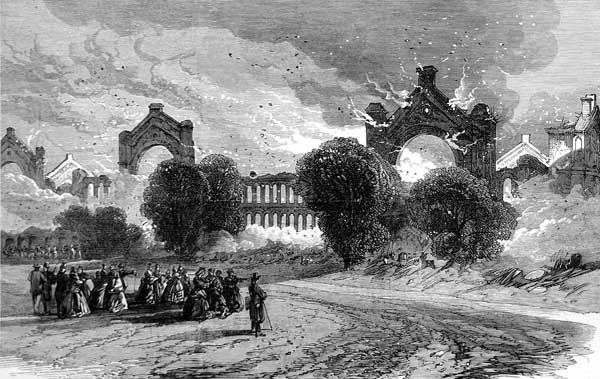|
Lucas Brothers (company)
Lucas Brothers was a leading British building business based in London. Early history The business was founded by Charles Thomas Lucas (1820 London – 1895 Warnham Court, near Horsham) and Thomas Lucas (1822–1902). They were the sons of James Lucas (1792–1865), a builder from St Pancras, London. Charles joined his father's business and was soon employed to manage construction of the Norwich & Brandon Railway for Sir Samuel Morton Peto. In 1842 Charles set up his own contracting business in Norwich and progressed to rebuilding Peto's house, Somerleyton Hall. Charles and Thomas established a facility in Lowestoft from which they undertook various works, including the railway, the station, the Esplanade, Wellington Terrace, Kirkley Cliff Terrace, St John's church, and several hotels. Building contracts Building contracts included: *Covent Garden Opera House (completed in 1858) *Oxford University Museum of Natural History (1860) * Floral Hall (1860) *King's College Hospit ... [...More Info...] [...Related Items...] OR: [Wikipedia] [Google] [Baidu] |
Private Company
A privately held company (or simply a private company) is a company whose shares and related rights or obligations are not offered for public subscription or publicly negotiated in the respective listed markets, but rather the company's stock is offered, owned, traded, exchanged privately, or Over-the-counter (finance), over-the-counter. In the case of a closed corporation, there are a relatively small number of shareholders or company members. Related terms are closely-held corporation, unquoted company, and unlisted company. Though less visible than their public company, publicly traded counterparts, private companies have major importance in the world's economy. In 2008, the 441 list of largest private non-governmental companies by revenue, largest private companies in the United States accounted for ($1.8 trillion) in revenues and employed 6.2 million people, according to ''Forbes''. In 2005, using a substantially smaller pool size (22.7%) for comparison, the 339 companies on ... [...More Info...] [...Related Items...] OR: [Wikipedia] [Google] [Baidu] |
Charing Cross Railway Station
Charing Cross railway station (also known as London Charing Cross) is a central London railway terminus between the Strand and Hungerford Bridge in the City of Westminster. It is the terminus of the South Eastern Main Line to Dover via Ashford. All trains are operated by Southeastern, which provides the majority of commuter and regional services to south-east London and Kent. It is connected to Charing Cross Underground station and is near to Embankment Underground station and Embankment Pier. The station was originally opened by the South Eastern Railway in 1864. It takes its name from its proximity to the road junction Charing Cross, the notional "centre of London" from which distances from the city are measured. During the 19th century the station became the main London terminus for continental traffic via boat trains, and served several prestigious international services. It was badly damaged by an engineering accident in 1905 and extensively rebuilt, subsequently beco ... [...More Info...] [...Related Items...] OR: [Wikipedia] [Google] [Baidu] |
Rendlesham Hall
Rendlesham Hall was a large manor house in the village of Rendlesham in Suffolk. History The hall was built in the pointed style in 1780A Vision of Britain through time University of Portsmouth and two lodges, Woodbridge Lodge and Ivy Lodge, were added in 1790. The hall was acquired by Peter Thellusson, a wealthy banker, in the name of his son, in 1796. [...More Info...] [...Related Items...] OR: [Wikipedia] [Google] [Baidu] |
Henham Park
Henham Park is an historic estate in the parish of Wangford with Henham, situated north of the village of Blythburgh in the English county of Suffolk. The park is bordered to the east by the A12 road and to the west by the A145, the two roads meeting to the south of the estate.. It was historically the seat of the Earl of Stradbroke. In 1953 the 4th Earl demolished the Georgian manor house, known as Henham Hall. The estate's current owner is Keith Rous, 6th Earl of Stradbroke (b. 1937), formerly of Mount Fyan's Station, Dundonnell, Victoria, Australia,Kidd, Charles, ''Debrett's Peerage & Baronetage'' 2015 Edition, London, 2015, p.P1174 a 5,900 hectare (14,580 acre) ranch which he purchased in 1989 and sold in 2016 for $ Aus 34 million (£19 million). In 2006 a major £60 million redevelopment plan was announced by Hektor Rous (b.1978), the estate manager and a younger son of the 6th Earl, including the building of a large hotel. The park is the venue for the Latitude Festival ... [...More Info...] [...Related Items...] OR: [Wikipedia] [Google] [Baidu] |
Cliveden
Cliveden (pronounced ) is an English country house and estate in the care of the National Trust in Buckinghamshire, on the border with Berkshire. The Italianate mansion, also known as Cliveden House, crowns an outlying ridge of the Chiltern Hills close to the South Bucks villages of Burnham and Taplow. The main house sits above the banks of the River Thames, and its grounds slope down to the river. There have been three houses on this site: the first, built in 1666, burned down in 1795 and the second house (1824) was also destroyed by fire, in 1849. The present Grade I listed house was built in 1851 by the architect Charles Barry for the 2nd Duke of Sutherland. Cliveden has been the home to a Prince of Wales, two Dukes, an Earl, and finally the Viscounts Astor. As the home of Nancy Astor, wife of the 2nd Viscount Astor, Cliveden was the meeting place of the Cliveden Set of the 1920s and 30s—a group of political intellectuals. Later, during the early 1960s when it was t ... [...More Info...] [...Related Items...] OR: [Wikipedia] [Google] [Baidu] |
York Railway Station
York railway station is on the East Coast Main Line serving the city of York, North Yorkshire, England. It is north of and on the main line it is situated between to the south and to the north. , the station is operated by London North Eastern Railway. York station is a key junction approximately halfway between London and Edinburgh. It is approximately north of the point where the Cross Country and TransPennine Express routes via Leeds join the main line, connecting Scotland and the North East, North West, Midlands and southern England. The junction was historically a major site for rolling stock manufacture, maintenance and repair. In ''Britain's 100 Best Railway Stations'' by Simon Jenkins, the station was one of only ten to be awarded five stars. History The first York railway station was a temporary wooden building on Queen Street outside the walls of the city, opened in 1839 by the York and North Midland Railway. It was succeeded in 1841, inside the walls, by wha ... [...More Info...] [...Related Items...] OR: [Wikipedia] [Google] [Baidu] |
Liverpool Street Station
Liverpool Street station, also known as London Liverpool Street, is a central London railway terminus and connected London Underground station in the north-eastern corner of the City of London, in the ward of Bishopsgate Without. It is the terminus of the West Anglia Main Line to Cambridge, the Great Eastern Main Line to Norwich, commuter trains serving east London and destinations in the East of England, and the Stansted Express service to Stansted Airport. The station opened in 1874, as a replacement for Bishopsgate station as the Great Eastern Railway's main London terminus. By 1895, it had the most platforms of any London terminal station. During the First World War, an air raid on the station killed 16 on site, and 146 others in nearby areas. In the build-up to the Second World War, the station served as the entry point for thousands of child refugees arriving in London as part of the ''Kindertransport'' rescue mission. The station was damaged by the 1993 Bishopsgate ... [...More Info...] [...Related Items...] OR: [Wikipedia] [Google] [Baidu] |
Lowestoft Railway Station
Lowestoft railway station (formerly Lowestoft Central) serves the town of Lowestoft, Suffolk, and is the eastern terminus of the East Suffolk Line from and is one of two eastern termini of the Wherry Lines from (the other being ). Lowestoft is down the line from Norwich and measured from ; and is the easternmost station on the National Rail network in the United Kingdom. The station is currently managed by Greater Anglia, which also operates all of the trains that call. Services are typically formed by Class 755 FLIRT trains. According to Office of Rail Regulation usage figures for 2010/11, Lowestoft was, after Ipswich, and , the fourth-busiest station in Suffolk. Until the late 1960s the station was served more frequently, with regular express trains for holidaymakers in the summer to and from London Liverpool Street and local services to Great Yarmouth. However, as part of Greater Anglia’s new franchising agreement, services between Lowestoft and London will be rein ... [...More Info...] [...Related Items...] OR: [Wikipedia] [Google] [Baidu] |
Great Eastern Hotel, London
Andaz London Liverpool Street is a 5 star hotel in central London, situated immediately south of Liverpool Street station, originally built as the Great Eastern Hotel in 1884. The building underwent extensive renovation and expansion between 1899 and 1901 and again in 2000, when it was co-owned by Terence Conran. Hyatt has owned the hotel since 2006, operating it under the Andaz brand. The hotel has been listed Grade II on the National Heritage List for England since March 1993. History The Victorian building that houses the hotel is built on the site of England's first hospital for the mentally ill, the Bethlehem Royal Hospital, which opened in 1247 and became known as 'Bedlam'. The hotel was designed by the brothers Charles Barry, Jr. and Edward Middleton Barry. It was built by Lucas Brothers and completed in 1884. An additional section, the Abercorn Rooms, was added a decade later by Robert William Edis. The hotel's clientele included business people who could avoid City ... [...More Info...] [...Related Items...] OR: [Wikipedia] [Google] [Baidu] |
The Principal York
The Principal York is an historic Grade II listed building on Station Road, adjacent to York railway station, England. It is a five-storey building of yellow Scarborough brick and was completed in 1878, a year after the present station opened. The 1853 Hotel The first York station hotel (The York Royal Station Hotel) was opened on 22 February 1853, the architect was G. T. Andrews, as an addition to York old railway station. The hotel became redundant after the opening of the new station in June 1877 and was converted into offices. The 1878 Hotel The new hotel opened on 20 May 1878 as the Royal Station Hotel, York. The architect was William Peachey of the North Eastern Railway. The hotel was designed as an integral part of the new station and the North Eastern Railway Company's flagship hotel, and as such was managed directly by the railway company. It featured elegant, high-ceilinged banqueting rooms and 100 large bedrooms costing 14 shillings a night. It was built by L ... [...More Info...] [...Related Items...] OR: [Wikipedia] [Google] [Baidu] |
Alexandra Palace
Alexandra Palace is a Grade II listed entertainment and sports venue in London, situated between Wood Green and Muswell Hill in the London Borough of Haringey. It is built on the site of Tottenham Wood and the later Tottenham Wood Farm. Originally built by John Johnson and Alfred Meeson, it opened in 1873 but following a fire two weeks after its opening, was rebuilt by Johnson. Intended as "The People's Palace" and often referred to as "Ally Pally", its purpose was to serve as a public centre of recreation, education and entertainment; North London's counterpart to the Crystal Palace in South London. At first a private venture, in 1900, the owners planned to sell it and Alexandra Park for development. A group of neighbouring local authorities managed to acquire it. An Act of Parliament created the Alexandra Palace and Park Trust. The Act required the trustees to maintain the building and park and make them available for the free use and recreation of the public forever. Th ... [...More Info...] [...Related Items...] OR: [Wikipedia] [Google] [Baidu] |
Charterhouse School
(God having given, I gave) , established = , closed = , type = Public school Independent day and boarding school , religion = Church of England , president = , head_label = Head , headmaster = Alex Peterken , r_head_label = Second Master , r_head = Andrew Turner , chair_label = Chair of Governors , chairman = Vicky Tuck , founder = Thomas Sutton , fundraiser = , specialist = , address = Charterhouse Road , city = Godalming , county = Surrey , country = United Kingdom , postcode = GU7 2DX , local_authority = , dfeno = 936/6041 , urn = 125340 , ofsted = , staff = ≈55 ... [...More Info...] [...Related Items...] OR: [Wikipedia] [Google] [Baidu] |

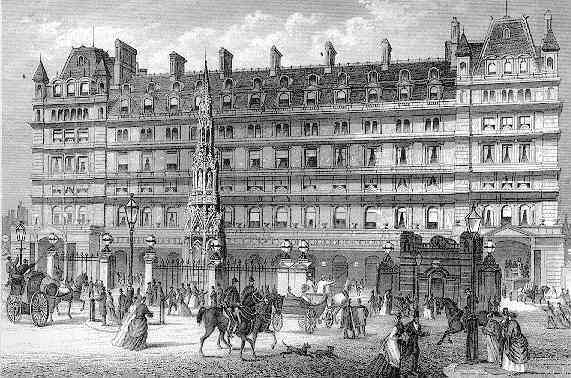
_p4.130_-_Rendlesham_Hall%2C_Suffolk.jpg)
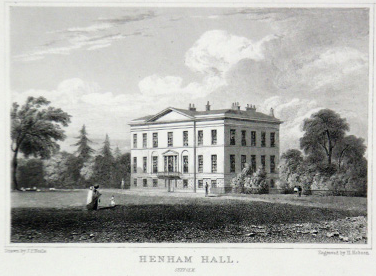
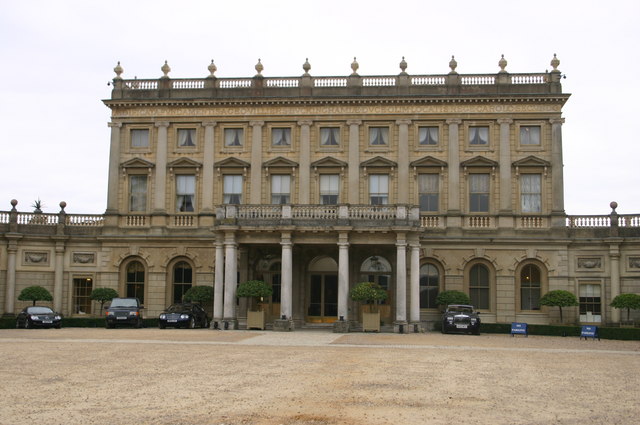
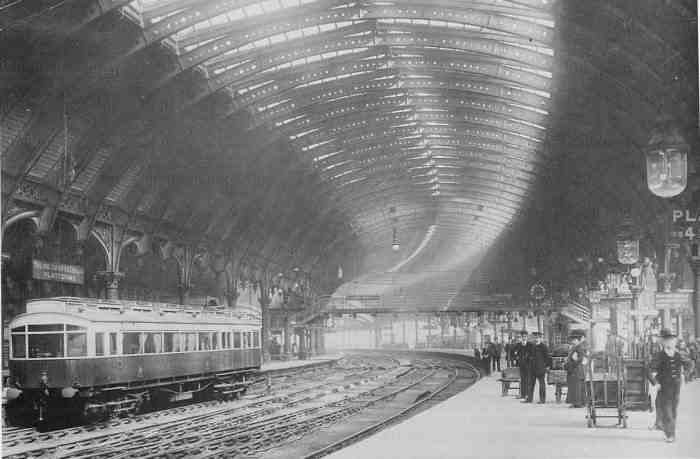
_p139_-_Liverpool_Street_and_Broad_Street_stations_(plan).jpg)

